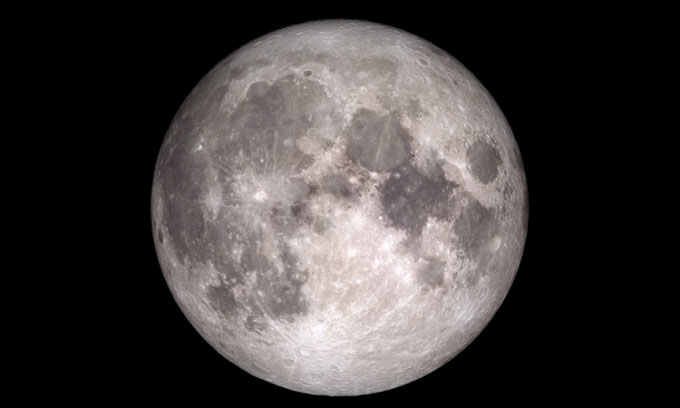Mini black holes formed in the early universe may have crashed into the Moon with enough force to alter the surrounding material.
The Moon could be filled with craters caused by impacts from mini black holes, and studying them could reveal valuable information about dark matter, reported Futurism on November 22. This new research was published in the journal Monthly Notices of the Royal Astronomical Society.

Image of the Moon as seen from Earth, according to data from NASA’s Lunar Reconnaissance Orbiter. (Photo: NASA/GSFC/Arizona State University)
Researchers believe that a series of atom-sized black holes formed shortly after the Big Bang. As these ultra-dense objects traveled through space, they began to disperse and eventually made their way to the Solar System, crashing onto the Moon.
Mini black holes could also collide with other celestial bodies, including Earth. However, due to the Moon’s thin atmosphere, it is not as well-protected from impacts as the blue planet.
“In principle, the Moon is nothing special. We mention the Moon because it has been studied extensively by humans. Some moons of Neptune, Jupiter, and Mercury are also strong candidates,” said Almog Yalinewich, a physicist at the Canadian Institute for Theoretical Astrophysics and co-author of the study.
The traces left by mini black holes could help experts gain further insight into dark matter, the mysterious substance believed to make up most of the material in the universe. Some scientists believe that dark matter is generated from black holes formed by density fluctuations in the early universe.
Therefore, if mini black holes from the early universe impacted the Moon, they could leave traces of dark matter and alter the properties of other materials they come into contact with. Specifically, black holes have an extremely strong gravitational effect, which means they may have crashed into the Moon with enough force to change the characteristics of the surrounding material. Nuclear bombs can do something similar; they have been known to turn sand around the point of explosion into glass.
The research team believes that future crewed missions to the Moon, such as NASA’s Artemis program, could help them search for and study the craters left by black holes, shedding light on the nature of mysterious dark matter.


















































